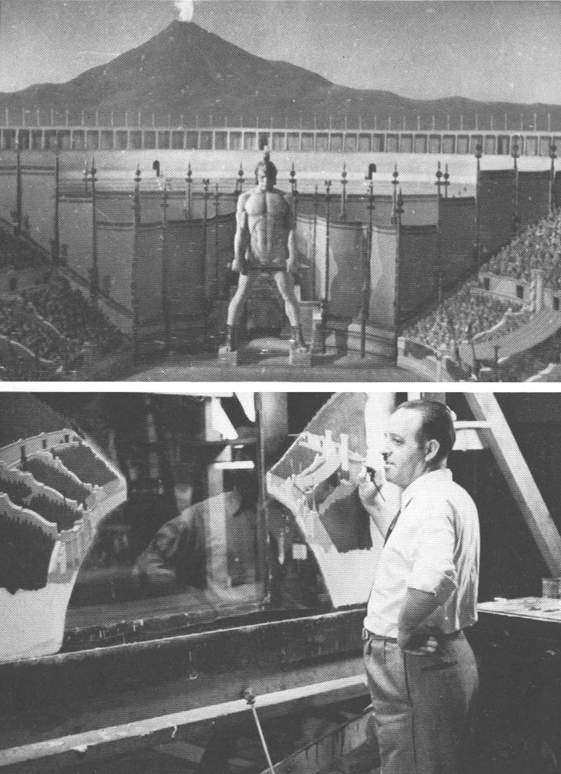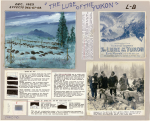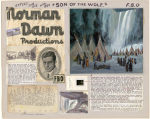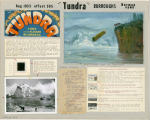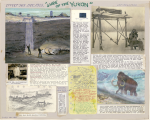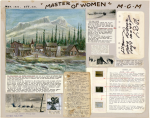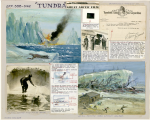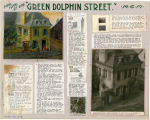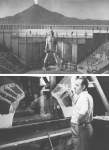These wonderful cards are from the collection of Norman O. Dawn, as displayed at the Harry Ransom Center, The University of Texas at Austin last year, as part of the special effects section of the Making Movies exhibition. Dawn was the creator of many innovative special effects for photography and film, most notably the glass shot, where the mise-en-scene is augmented by scenery painted onto a pane of glass that is placed between the camera and the set/location. Here’s an example of Byron Crabbe (who also worked on King Kong and The Most Dangerous Game before his untimely death in 1937) painting set extensions onto glass for a scene from The Last Days of Pompeii (1935):
[This image was taken from NZPete’s fabulous blog about old-school special effects, including matte painting, glass shots and the like. Pete has managed to round up an impressive array of images and info about the techniques and personnel that made so many extraordinary moments of Hollywood’s golden age.]
Dawn created these cards to record his array of techniques used on more than eighty films, and to illustrate them for the producers and executives who had to be convinced that such amazing illusions were possible. If nothing else, with their miniature watercolours, oil paintings, sketches and handwritten notes, they stand as testament to the artisanal, hands-on nature of early special effects.


